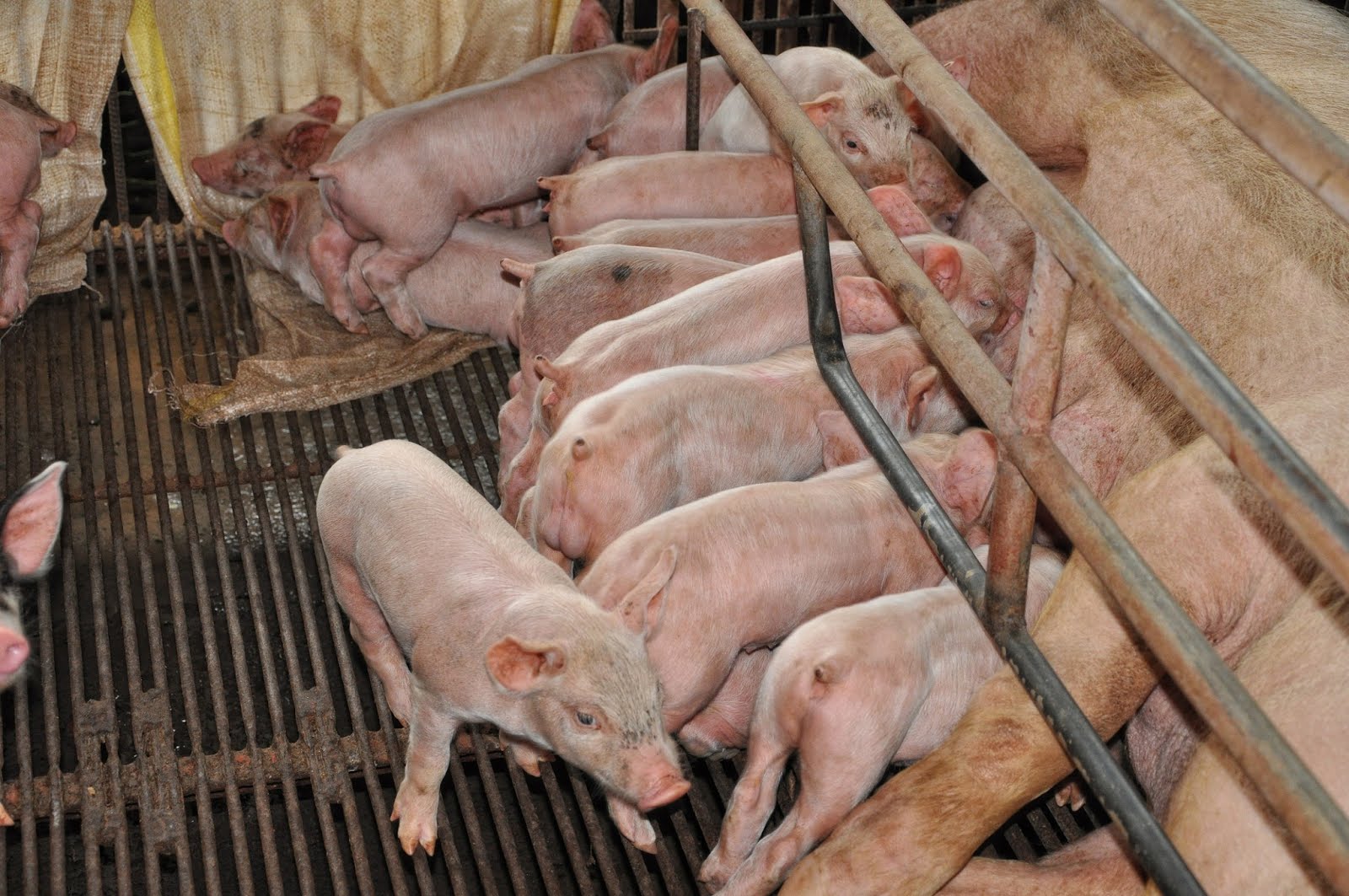

There is so much cruelty animals go through we get to see in the slaughter houses. As the slaughter process begins, livestock are restrained in a chute that limits physical movement of the animal. Once restrained, the animal is stunned to ensure a humane end with no pain. After stunning, animals are usually suspended by a hind limb and moved down a conveyor line for the slaughter procedures. They are typically bled (a process called sticking or exsanguination) by the insertion of a knife into the thoracic cavity and severance of the carotid artery and jugular vein. This method allows for maximal blood removal from the body. At this point in the process, the slaughtering procedures begin to differ by species. The optimum amount of rest required by meat animals before they are slaughtered depends on the climate, the distance they have travelled, their method of transport and their general health. In some countries, where animals are auctioned at stock yards before they are taken to an abattoir, the rest periods are sometimes inadequate. This creates a commercial problem that is difficult to evaluate. On one hand, animals lose weight during transport and in holding pens, and it is undesirable to use pens and labour to prolong a rest period that confers no immediately obvious commercial advantage. On the other hand, stressed or weary animals sometimes produce meat with an unacceptable appearance or water holding capacity, and this may create economic losses later on. Animals lose about 0.2% per hour of their live weight once feeding has ceased, but this is very variable.
Animals can be effectively stunned by concussion. Concussion may be induced by a bullet or a bolt that penetrates the cranium, or by the impact of a fast-moving knocker on the surface of the cranium. In modern abattoirs, the primitive pole-axe has been replaced by devices which use expanding gas, either from an air-compressor or from a blank ammunition cartridge. First, the animal is restrained in a narrow pen or knocking box in order to minimize its head movements. The concussion instrument is then accurately located at a point on the midline of the skull, above the level of the brow ridges of the eye sockets. Concussion stunning should not be applied on the neck or posterior part of the skull. The knocker is a heavy instrument held with both hands. There is a safety catch on the handle, but the actual trigger protrudes from the head of the knocker and is activated as the knocker is tapped against the animal's head. The captive bolt pistol resembles a heavy hand gun, but a blank cartridge is used to propel a cylindrical bolt rather than a bullet into the skull. After penetration, the bolt is withdrawn into the barrel of the pistol and the pistol is reloaded. Steers, heifers and cows are normally stunned with a knocker or a heavy captive bolt pistol, but bulls and boars which have massive skulls are sometimes shot with a rifle bullet. Pigs and lambs may be stunned with a light-weight captive bolt pistol. Pigs may be stunned by placing them in an atmosphere which contains 65% carbon dioxide. Carbon dioxide is heavier than air and is trapped in a pit or deep tunnel into which the pigs are conveyed. After about one minute, the pigs are withdrawn in a cage or on a conveyer belt, and are then exsanguinated as rapidly as possible. Carbon dioxide stunning may also be used for turkeys. Meat animals are usually stunned, shackled and exsanguinated, in that order. However, poultry may be shackled or hooked by their feet as soon as they are unloaded from the crate. Getting poultry into crates prior to transport is a major commercial problem. Live birds are easily bruised or more seriously damaged: this causes suffering to the birds and creates carcasses with an unattractive appearance. Poultry are sometimes exsanguinated without first being stunned. However, electrical stunning is very effective, and it facilitates the subsequent removal of the feathers. Concussion from a hammer-blow is commonly used to stun ducks.